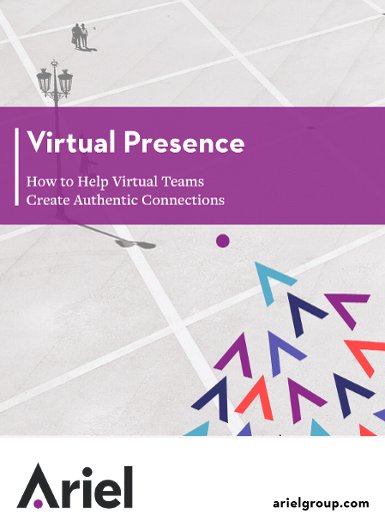Dialogue with a Dragon: Managing Presence and Technology

I will never forget the day several years ago when I showed up to teach a program on “leadership presence” to a group of senior partners in Frankfurt and they requested, unanimously, that we change the topic of the seminar to “dealing with our blackberries.”
I have spent the last fifteen years coaching executives, managers, leaders and administrators to “show up and choose to be present” (to quote anthropologist Angeles Arrien) in their personal and professional communication with others in the workplace. For fifteen years before that, as a professional actor, I myself practiced the art of showing up on stage, choosing to be present and engaging with audiences. Throughout those combined thirty years, as I have come home each night from the office or the studio, I have watched the gradual, inevitable evolution of a very different kind of communication— that is, digital technology—as it became central to my life and the lives of my clients. This relationship—indeed this tension—between the art of personal communication and the reality of digital communication has now become an intriguing theme of most of our lives. I will never forget the day several years ago when I showed up to teach a program on “leadership presence” to a group of senior partners in Frankfurt and they requested, unanimously, that we change the topic of the seminar to “dealing with our blackberries.”
There are essentially two philosophical positions that a professional trainer of communication skills can adopt in today’s digital world. A recent experience with my 10-year old son and our home computer highlighted this polarity for me. I will share two positions, and then tell the story.
The first philosophical position (quoting Bob Dylan) is that “the times they are a-changin” and we’d “better start swimmin’ or we’ll sink like a stone.” The suggestion here is to change the mechanism of delivery of our lessons – to jump on the bandwagon of web-based training, e-learning and the virtual classroom. This of course presents a somewhat obvious dilemma for a trainer in my field who deals fundamentally in the realm of presentation skills, emotional intelligence, leadership presence and body language. However, the challenge is by no means insurmountable. Many of my colleagues advocate for “blended learning,” in which a live classroom experience is supported by web-based preparation and follow-up (far less costly) to ensure appropriate transfer and application of skills. Others in my field are shifting the content of their programming to focus on those growing areas of communication that directly involve technology such as conference call etiquette and web-cam presentation skills. All of these approaches are indeed important responses to the reality of the digital age.
The second philosophical direction is based on an equally important fundamental principle: human beings will always continue to connect with one another face-to-face, and the importance of engaging and empathizing with other live human beings has, in fact, never been greater. Recent popular news stories recount a disturbing trend in the y-generation, who, raised as they were on social media, texting and e-chatting, have never needed to become sensitive to the live cues of facial and vocal communication with their peers. Their value in the workplace, especially as truly effective managers and leaders, is therefore at risk. Thus, the logic goes, those of us who teach leadership presence and personal communication should keep doing exactly what we are doing (and do more of it) because the market-demand is only increasing.
Which brings me to the story of my son. He is a very smart kid (so says his father!), however he has always had a terrible challenge with spelling. For five years now we have worked with his teachers, specialists, and tutors to help him with this issue and, in the end, have little to show for it. The general consensus now seems to be that he is just one of those people who may never be a great speller, despite his sometimes extraordinary abilities with other elements of language, and we should learn to live with it.
Enter technology. It turns out that voice-to-text software has hit a new level of proficiency recently, and is positioned to be an ideal mechanism for bad spellers. The perceived risk, of course, is that my son would become dependent on it and never learn to spell. Now, I remember a similar technological revolution when I was in college. In the span of two years, word processors suddenly became ubiquitous in college dorm rooms—and the transition from the electric typewriter to the word-processor (with its ability to cut, paste and edit a paper without having to entirely re-write it before handing it in) increased my motivation to perfect my work, which resulted immediately in a higher grade point average.
Last week we installed the newest version of Dragon Dictation at home on our mac. The results have been fantastic. The same just happened for my son. Freed from the tedium of hand-writing his papers and constantly checking for spelling, he pounded out page after page of well constructed ideas by dictating directly into the computer (which, miraculously, made absolutely zero spelling errors.)
What, then, can we learn as communication trainers from this story? Does it suggest that we whole-heartedly embrace the technological reality? I’m not so sure. My own home continues, in fact, to be a TV-free household, and will remain so, despite our growing reliance on our computers. In the end, it’s that old, perhaps boring conclusion that we in the field of training have to make each decision based on its own merits, and retain a balance between working with technology and continuing to teach the essentials of human-to-human communication. As Dylan so wisely prophesied: “Don’t speak too soon, for the wheel’s still in spin.”
